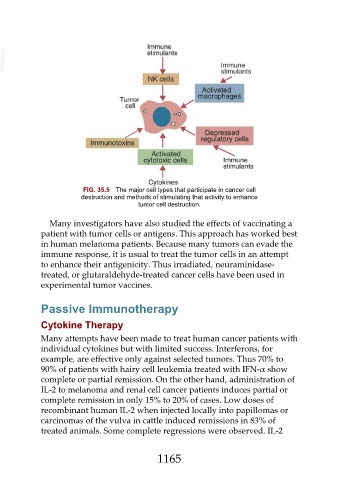Page 1165 - Veterinary Immunology, 10th Edition
P. 1165
VetBooks.ir
FIG. 35.5 The major cell types that participate in cancer cell
destruction and methods of stimulating that activity to enhance
tumor cell destruction.
Many investigators have also studied the effects of vaccinating a
patient with tumor cells or antigens. This approach has worked best
in human melanoma patients. Because many tumors can evade the
immune response, it is usual to treat the tumor cells in an attempt
to enhance their antigenicity. Thus irradiated, neuraminidase-
treated, or glutaraldehyde-treated cancer cells have been used in
experimental tumor vaccines.
Passive Immunotherapy
Cytokine Therapy
Many attempts have been made to treat human cancer patients with
individual cytokines but with limited success. Interferons, for
example, are effective only against selected tumors. Thus 70% to
90% of patients with hairy cell leukemia treated with IFN-α show
complete or partial remission. On the other hand, administration of
IL-2 to melanoma and renal cell cancer patients induces partial or
complete remission in only 15% to 20% of cases. Low doses of
recombinant human IL-2 when injected locally into papillomas or
carcinomas of the vulva in cattle induced remissions in 83% of
treated animals. Some complete regressions were observed. IL-2
1165

